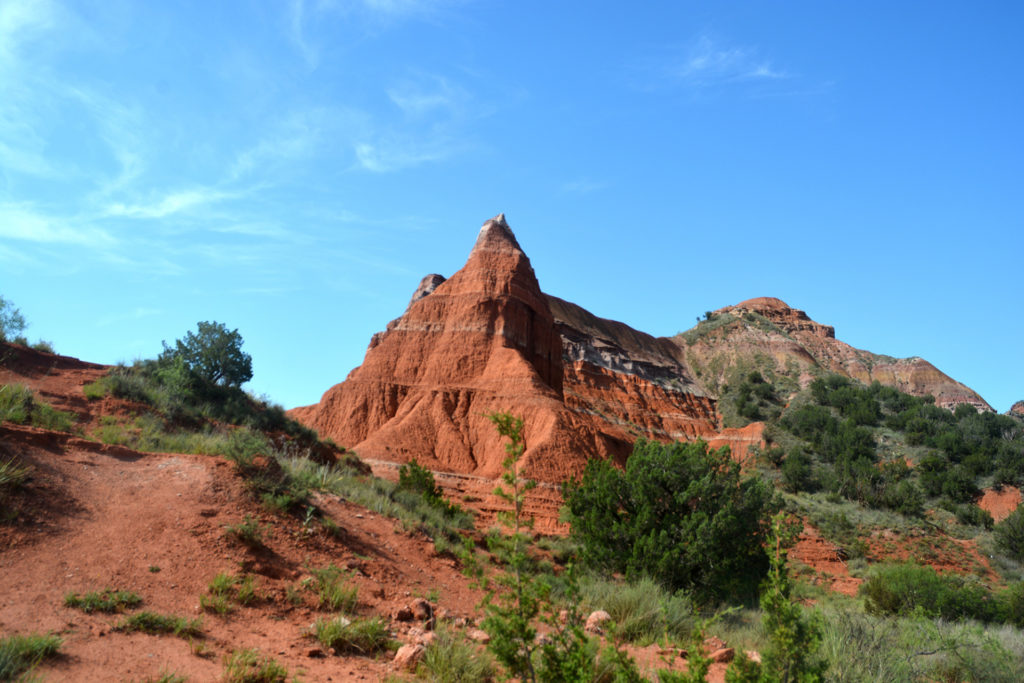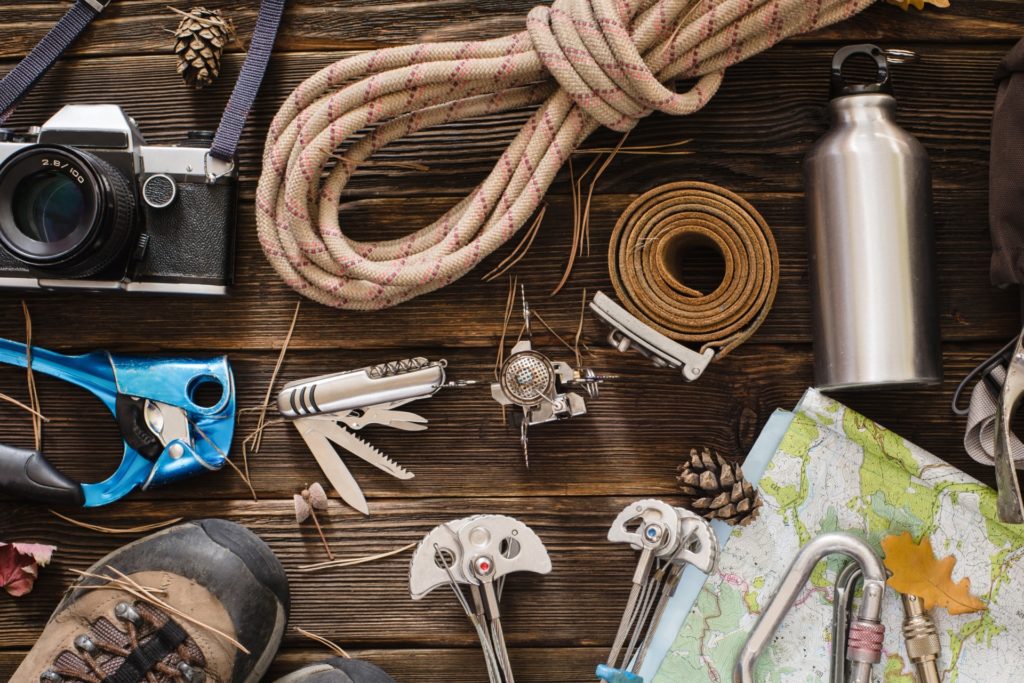Watch your step when hiking
Planning, preparation, caution key to positive hiking experience
While hiking may appear to be a simple outdoor activity, planning and preparation are necessary to help avoid unwanted surprises and keep your loved ones from worrying, said Texas A&M AgriLife experts.

Share your plans, do your research
A basic but frequently neglected pre-hike practice is to let a family member or friend know your planned hiking route and expected return time.
“Before you leave to go hiking, always let someone know where you are going and give an approximate time when you plan to return,” said Sam Rhodes, Texas A&M Forest Service staff forester, Bryan-College Station. ”Give your itinerary to a family member or friend and develop an emergency plan in the event someone doesn’t hear from you within a specific time frame.”
Rhodes said the longer a person expects to be hiking, the more important it is to let those at home know what your plans are and what action to take if they do not hear from you in a reasonable amount of time.
He said in preparation for the hike itself, it’s also a good idea to know what department or agency oversees or administers the area you plan to use.
“Contact someone at that agency who is familiar with that area,” Rhodes said. “You’ll also need to know if there’s an entrance fee or permit required as well as getting information on whether the trails are expected to be open when you expect to get there. They can also provide information on trail conditions and the topography of the area where you plan to hike.”
He said hikers should take an honest fitness and skill level “inventory” relative to the planned trail system before they begin their hike.
“It’s important to be realistic about how long and far you can hike and if the conditions under which you are planning to hike will not be too taxing for your level of fitness,” he said. “And since cell reception can be sketchy and you may not be able to access GPS, you should be able to read a map and have a basic understanding of how to navigate in an unfamiliar environment. If new technology isn’t available, you may have to go ‘old school’ with a trail map and compass.”
Although some hikers may be inclined to do some off-trail exploring, the safest route is to take the trail most traveled.
— Sam Rhodes, Texas A&M Forest Service staff forester
Dress for successful hiking
Larry Hysmith, Texas A&M AgriLife Extension Service 4-H program specialist for statewide natural resources programs, Bryan-College Station, said dressing correctly for the hike, including for the current weather and possible weather changes, is vital to hiking enjoyment and success.
“Be sure to use good footwear and socks,” he said. “Don’t wear a brand-new pair of hiking boots as you need time to break these in, and the trail isn’t the right place to do it. Wear a sturdy but comfortable pair of broken-in hiking or walking shoes. Remember, flip-flops are not considered proper hiking footwear.”
Be sure to wear clothing that is appropriate to the weather and take an extra layer of clothing and possibly a raincoat or poncho for good measure, he said.
“Hikers should also wear a hat or cap for protection from the sun,” he said. “Other sun protection might include sunglasses, sunscreen or a neck gaiter. Always be aware of the weather and any sudden changes to it. And don’t hesitate to turn around and head back if it looks like conditions may turn bad.”
The road most traveled
Although some hikers may be inclined to do some off-trail exploring, the safest route is to take the trail most traveled, Rhodes said.

“Do not meander off the trail,” he said. “Trails help us stay where we are supposed to go, not where we want to go. Staying on established trails also minimizes your risk of getting lost or disoriented or running into hazards, such as wildlife or unstable topography. And when you stay on the trail you help with the concept of ‘leave no trace,’ which means you minimize any ecological damage while hiking.”
Off-trail hiking can also increase the chance of encountering a venomous snake or potentially harmful critters like ticks, chiggers, spiders, scorpions, wasps and fire ants.
“If you see wildlife on the trail, don’t approach it or try to give it food, even if it seems harmless,” Rhodes said. “It may still be potentially hazardous as these are wild animals and, in addition to that, feeding wildlife can lead to their habituation or dependence on humans, which in many cases ends in the animal’s death. The saying in many parks that ‘a fed bear is a dead bear’ can also be applied to local wildlife such as raccoons, possums and deer.”
More about ‘leave no trace’
Rick Harwell, assistant professor of the practice in the Department of Recreation, Park and Tourism Sciences in the College of Agriculture and Life Sciences and an avid hiker, said a hiker’s awareness of their ecological footprint and having respect for others are important aspects of the activity.
A good rule of thumb is to take only photographs and leave only footprints.
Rick Harwell, Texas A&M Department of Recreation, Park and Tourism Sciences
“If you can, try to camp, travel and hike on durable, resilient surfaces to minimize impact,” he said. “And remember to respect not only the wildlife you encounter, but also the other people who may be using the same trail. Give them room and be respectfully quiet. Also try to minimize any visual impacts, such as photographic flashes or moving flashlights around randomly when it starts to get dark.”
Harwell said disposing of waste is another vital aspect of leaving no trace.
“Properly dispose of any waste,” he said. “If you’ve packed it in for your hike, be sure to take it out when you leave. And leave what you find during the hike where you found it. That goes for rocks, artifacts, fossils, flowers or plants. A good rule of thumb is to take only photographs and leave only footprints.”
He also said in order to keep campfire impacts to a minimum, it is best to not start a campfire, but if one is absolutely necessary it is best to keep it small and well-contained and follow the U.S Forest Service guidelines for maintaining and extinguishing a campfire.
The experts also noted some additional essential items for your hike, depending on how long you plan to be out hiking. These include:
— Food: Easy-to-carry high-calorie foods containing protein and vitamins, not junk food.
— Water: An amount suitable for the length of time you expect to be gone. The standard amount is about one quart of water per person per hour.
— Shelter: If hiking for longer periods and possibly beyond dusk, take an emergency-use cover or space blanket.
— Light: Have a flashlight or headlamp available in case it starts to get dark or if you plan to hike at night.
— Knife: A knife is a good all-around utility tool in the event you need to improvise.
— First aid: A standard or basic first-aid kit is usually sufficient, but it may need to be supplemented to suit more specific or personal needs.
— Fire source: Take matches or a small lighter in the event you need to start a fire to stay warm or to use as a signal.




